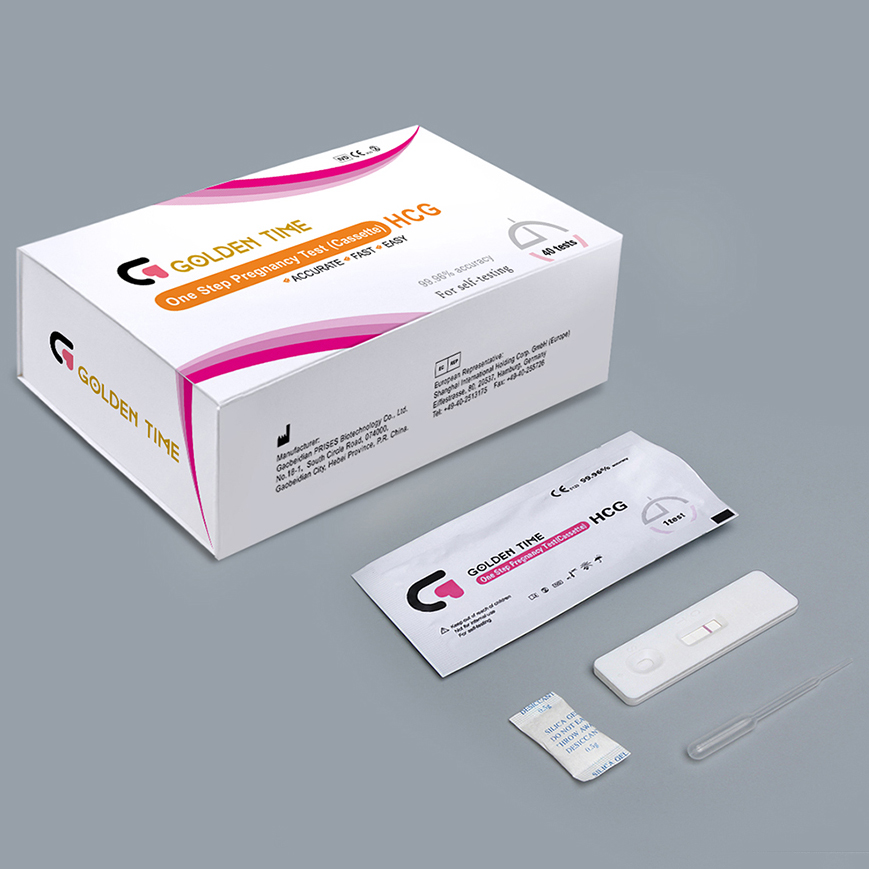1 月 . 06, 2025 11:08 Back to list
pregnancy strip
Pregnancy is a profound journey, a mix of anticipation, joy, and sometimes anxiety. One of the earliest steps in this journey is often taken with a simple tool the pregnancy strip. For many, it’s the initial confirmation of the new life developing within. Understanding the nuances of this little device, its accuracy, and its proper usage is vital for those trying to conceive.

Pregnancy strips have become an indispensable tool due to their affordability, accessibility, and ease of use. Essentially, these strips are designed to detect the presence of the hormone hCG (human chorionic gonadotropin) in a woman’s urine. This hormone is produced shortly after a fertilized egg attaches to the uterine lining. Most strips can detect hCG as early as seven to ten days after conception, making them a reliable source for early pregnancy detection.
For optimal accuracy, it’s recommended that pregnancy strips be used with the first morning urine. This is because the hCG levels are more concentrated in the morning, which can improve the reliability of the results. Users should also ensure that they do not consume excessive amounts of fluids before taking the test as this can dilute the urine, potentially impacting the results.

The application process of a pregnancy strip is straightforward. Generally, the strip should be placed in a cup of collected urine or held directly in the urine stream for a specific amount of time, usually suggested by the manufacturer. It is crucial to follow these instructions meticulously, as deviations can compromise the accuracy. After exposure to urine, the strip typically requires about three to five minutes to develop the results.
Pregnancy strips have a high accuracy rate, around 97-99% when used correctly. However, professional confirmation by a healthcare provider through blood tests or ultrasound is always recommended for absolute certainty.
pregnancy strip
In terms of expertise, not all pregnancy strips are created equal. Some may have a higher sensitivity to hCG, potentially detecting pregnancies earlier than their counterparts. It's beneficial to compare brands, check reviews, and possibly choose strips endorsed by healthcare professionals.
The concern about false results, albeit rare, still exists. A false positive, where the test indicates pregnancy when there isn't one, can occur if there are certain medications involved. Similarly, a false negative, where the test fails to detect an existing pregnancy, might happen if the test is taken too early, or if the urine was diluted.
For authoritativeness and trustworthiness, choose pregnancy strips that are FDA approved or recommended by healthcare institutions. This approval means that the product meets certain standards for accuracy and reliability. Additionally, reading through customer testimonials and clinical endorsements can provide further assurance of the product’s credibility.
On a communal level, online forums and support groups can be invaluable resources. Women often share their firsthand experiences, providing insights that are both personal and pragmatic. These platforms can be a source of solace and understanding as they connect individuals who are on similar journeys.
In conclusion, while pregnancy strips are simple, their role is anything but negligible. The assurance of a well-chosen and accurately used pregnancy strip can turn what is often an anxious wait into a moment of clarity and relief. When introducing this tool into your pregnancy planning, arm yourself with knowledge, compare products diligently, and support your decisions with professional advice whenever possible. The journey to motherhood is unique for every individual, and starting it on the right note with a reliable pregnancy strip is a step toward clarity and preparation.
-
Early Pregnancy Test Kits Accurate & Fast Results Bulk Order Now
NewsMay.30,2025
-
Buy OPK Tests for Pregnancy Detection Bulk Supplier Discounts
NewsMay.30,2025
-
Buy OPK Tests for Pregnancy Detection Bulk Supplier Discounts
NewsMay.30,2025
-
Best At Home H Pylori Test Kits Accurate, Fast & FDA-Certified
NewsMay.29,2025
-
Accurate Syphilis Test Kits Trusted Suppliers & Manufacturers
NewsMay.29,2025
-
Wholesale Stool Occult Blood Test Kits Bulk Supplier Pricing
NewsMay.29,2025

